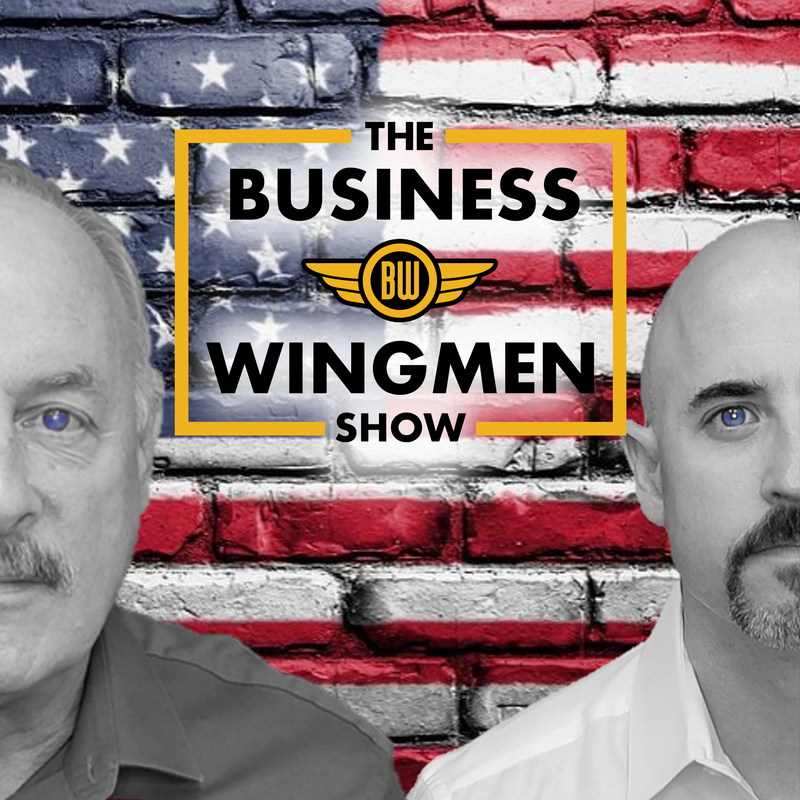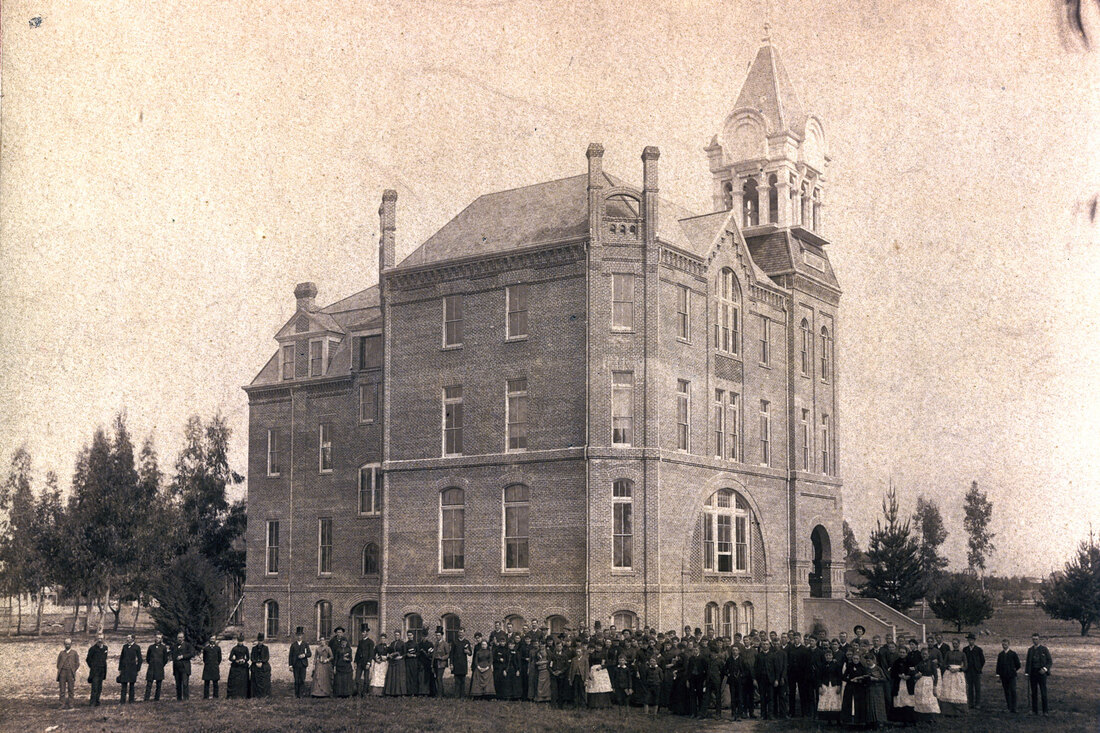Investing to Get Ahead at Work11/18/2022 Square-1's managing director Travis Smith is co-host of The Business Wingmen Show, a podcast covering business behaviors, strategies, leadership and much more. This week's episode...
EPISODE 89: Investing to Get Ahead at Work Making advancements in your career or your business means investing in yourself and the people with potential. But, how do you know it will pay off? Listen in as your Business Wingmen podcast co-hosts, Steve Smith & Travis Smith dissect why investing to get ahead at work makes sense, and just as important doing so proactively can change the game! Listen in to episode 89 here: https://www.spreaker.com/user/businesswingmen/089-investing-to-get-ahead-at-work?utm_campaign=episode-title&utm_medium=app&utm_source=widget
0 Comments
Growth in hiring is typically a good thing. Why thank you Captain Obvious. While growth in hiring may very well be a good thing, successfully navigating the hiring process is an entirely different story.
Successful hiring can make or break the performance of a company. Unsuccessful hiring on the other hand creates all sorts of fun challenges for folks like you and me. In fact, Harvard Business Review identifies 80% of employee turnover is due to bad hiring decisions. What does this mean? First, let’s look at the potential tangible repercussions. According to Dice, one of the larger online job boards, a poor hiring decision for a candidate earning $100,000 per year could cost, on average, $250,000, and that expense comes right off the bottom line. That’s scary stuff! Basically, if the hiring decision you made ends poorly you can expect that mistake to represent 2.5 times the cost of whatever the salary is of the person you are hired. Rather than fearing the hiring process, or having it work against us, we should approach it with a strategic and open minded process to ensure success. Want to improve your hiring practices? Employee (pun intended) these 15 tips: 1. Why Would Someone Pick You/ Your Company? No longer is it realistic for employers to have the notion that just because you are in the drivers’ seat administering the interview means you have all the power. In fact, it’s quite the opposite as the current market is more in favor of the job seeker as they have plenty of options to choose from, you being one of them. If you want the best of the best you have to be able to speak to WHY people should consider you and your company. Your story must resonate with your interviewees. 2. Character Over Competency The best leaders use this philosophy – hire people who will bleed for your cause and will make the right decisions even in the darkest of hours. Competency in most jobs can be taught, character is what the person has developed well before you came around so don’t think you can change it easily, if at all 3. Behavioral Based Interviewing A great tactic while interviewing is to ask people what they would do in certain situations. This causes people to have to think and adjust in the moment. You aren’t trying to catch someone doing something wrong here, more or less understand their thought process and how they handle certain tasks or situations 4. Know What You Want Before You Interview All too often I hear people say, “we need to interview some people first to better understand who we are looking for”. You should never need to interview someone in order to help you understand who or what you are looking for. If you use this practice most often what it means is you don’t know what you’re doing from a leadership perspective. Tough love I know but it’s highly important you know what you want and need before you go looking for it during interviews. Wasting people’s time so you can figure out your direction with hiring isn’t advisable and it’s unprofessional. 5. Consult Others Before you go about the interview process speak with other managers about their experiences and your plans for your hiring process. The best advice typically comes from those who have been there and done it before that way you can learn from their successes and mistakes 6. Make Sure You Know And Understand Your Vision Somewhat similar to number #1 however this focuses on you and your specific team. Put yourself in the shoes of the person interviewing and think “Why would I want to work for her/ him?” “Does this vision excite me?” “What is my role in the future of this company?” 7. Best Foot Forward A helpful reminder if nothing else, remember when people are interviewing you are witnessing their ideal self, seeing them at their best. Asking questions which will give you better insight into who they are day-to-day, not just during your interview, are always good ways to get a better glimpse into who they are in a very day setting. 8. Tell Them Your Leadership Philosophy This is especially important if you are hiring the person to join your team. This is also very different than #6 which talks about the vision for your team or company. Here you are sharing with your interviewee how you lead and what you believe in. A great precursor question to this is asking the candidate what type of leadership they like and want in their next career 9. Interview Tests It’s a great practice to test candidates on their abilities on the spot, so long as the test is directly relatable to their core job function. If you are interviewing a Mechanical Engineer, for example, it is highly suggested you test them on the exact work they would be doing for you (ie Solidworks modeling) 10. The Reference Trick I personally think references are a waste of time. Why? Because the people on the other end of the phone are doing nothing but singing the praises of the person you are interviewing. In over a decade I can name on one hand the number of reference checks I’ve performed which brought about a poor review. Here’s how to get around it – when you are on the phone with the reference which was provided by your interviewee ask who else the interviewee worked with and then try to phone that person. This person won’t be prepared for your call and may provide you with more realistic insight into the persons’ work ethic and behaviors. 11. Put Yourself In Their Shoes Interviewing isn’t easy. In fact it can be downright terrifying for some people. Try looking beyond the interview. Just because someone’s interview isn’t a glowing success, or they may seem overly nervous, doesn’t mean they aren’t a good catch. Just because someone interviews well doesn’t mean they will perform well in the job. 12. Job Description = Performance Expectations It’s time we ditch the HR job descriptions and actually write and talk about what the newly hired employee will be expected to do from a performance perspective. If you’re hiring for sales, interview your candidates based on the quotas and metrics you’ll have in place. Ask how they will achieve those goals, what their strategies will be, etc. 13. Know Your Non-Negotiables What are you not willing to tolerate? When I’m in a position of hiring my two non-negotiables are attitude and integrity because both of these are things we have 100% control over. Knowing that I then ask questions around those two to see how they view my perspective on my non-negotiables. Asking interviewees their non-negotiables will also give you an idea of where their priorities land 14. Challenge Your Own Mindset One of the most common mistakes leaders make when hiring is they select candidates that remind them of themselves or select candidates that are beneath them skill wise. Great leaders surround themselves with people who are not only competent but will challenge the leader to be better. 15. Don’t Hire If It Isn’t What You Want I hired an employee that was most of what I was looking for but through the interview I uncovered some things that were less than great. Up to this point I had interviewed so many people that I just decided to move forward with this particular candidate and did the whole ‘cross your fingers’ bit in hopes they would work out. From that experience I can tell you it is always better to not hire when in doubt than hire because you need to fill a spot. We’re constantly bombarded with a litany of articles, studies and discussions highlighting the generational differences in the workplace. These discussions often confuse and mislead readers by zeroing in on ‘key characteristics’ which supposedly define a generation while subtly stereotyping it at the same time. One of the topics that comes up often in these discussions is what makes for a good employee. This topic has permeated the business world for decades long before Gen-Z and Millennials entered the workplace over the last 10+ years causing a current day telenovela in the business world.
While the generations entering the workforce, and or exiting for that matter, may have a difference of opinion on what they want out of their careers and what they need in order to be happy in their jobs, there is one common trait which is synonymous with all generations and all employees for that matter. This common trait, or behavior, defines what a good employee is regardless of the stereotypes and or characteristics which accompany the respective generation. When we take away generational characteristics, race, religion, gender and everything else used to categorize and therefore sort and stack people we’re left looking at people’s actions. Their behaviors. What I’ve found true over the years is behavior is indicative of the true nature of a person, not their words. If we say one thing but then do (act) another, our behaviors become the defining force for who we are, not our words. This is certainly true for employees and their effectiveness as we look at whether an employee is ‘great’ versus ‘average’, or worse. So, what’s the difference between a great employee and an average one? An employee who excels versus one who mails it in operating at a mediocre level of performance. The difference is a little behavior known as INITIATIVE. I know what you’re thinking, “that’s not groundbreaking information. I’ve known this for years.” While we may know this, or have seen it in person, what’s remarkable are the number of people who actually deploy ‘initiative’ in their jobs. In my 15 years’ of business experience, of which 13 of those years have been in management, and 4 owning a business, I’ve experienced both first and secondhand the difference initiative makes in an employee and leader. When we strip away all the categories and demographics, mentioned above, this behavioral trait is the one that keeps rising to the top distinguishing the great performers from the average, mediocre and under performing employees. Initiative is everything! What does initiative look like in a business setting? When I think of great initiative in the work place the first thing that comes to mind is a situation I witnessed firsthand with an employee of mine several years ago. We had a client who was flying into Orange County to visit with several suppliers, our company being one of them. My employee, Megan, took it upon herself to pick up our client at the airport, coffee in hand, and bring them to our office for the meeting. Talk about service, yet her initiative to provide a great experience for our customer didn’t end there. She also took the client out to lunch in Laguna Beach (our client was from Idaho and had never seen the amazing beaches of Laguna). The client had also forgot to pack a bathroom bag for their travels so Megan took him to Target to pick up a couple items. After all this was done Megan shuttled him back to the airport. Yes, this was an amazing effort by Megan yet what made it truly remarkable and just as memorable was the fact that she did this all on her own. She didn’t ask for permission; she just took it upon herself to deliver top notch service. Memorable service at that. I still think about the initiative Megan displayed during this time and marvel at how impressive it was. Needless to say the client sent us an overwhelming email of appreciation thanking Megan for her time and willingness to shepherd him around. He said and I quote “It was the best business trip I’ve been on, I appreciate you [Megan] taking the time to ensure I had a good visit.” While that story sounds great it’s certainly not the norm. Rather than focusing next on the lack luster initiative most employees display at the office perhaps its better use of your time and mine to discuss the ways an employee can change their mindset and actions to better align with an initiative based work approach. Consider the following:
Key Takeaway: Possessing good initiative at work makes or breaks the quality of employee you are and often times how you are viewed in the organization. Are you a blessing to your team and company or are you dead weight? Having good initiative is the one behavior you can 100% control which in turn can directly impact in a positive way your job and career. Action Item: Stop making excuses for why you don’t act at work. Next time you see a problem or issue come up at the office which you are directly or close too take a chance and stand up and get involved. People who say ‘YES’ I can do that rather than ‘someone else can do that’ frequently experience better career It’s inescapable. Inevitably many of us have or are at present spending time on work or projects which can be classified as busy work. We don’t like it, but we’ve convinced ourselves, or better yet someone tried convincing us, that the work or task needs to be done and done by us. Much to our chagrin. Welcome to the trap of a nasty little productivity killer called non-value add work. Also known as mundane, tedious and even boring work. Non-value add work takes on many forms and shapes depending on the business you’re in and your respective your role within the company. If you’re an engineer tedious, non-value add work could include drafting, documentation and report writing. Your passion is designing next generation products but you’re inundated with a slew of tasks which are anything but new and exciting. Perhaps you’re in a leadership role and as such find yourself scheduling meetings, setting up company events, or ordering lunch for your team, etc. While none of these tasks are of absolutely zero value, when you take into consideration the person doing them they all of a sudden fall into the category of non-value add work. An executive spending time ordering lunch for their team is a poor use of their skills, compensation and time. That doesn’t mean it’s below the person to do so, it means it’s a terrible measure from a productivity standpoint. For example, if you’re a senior engineer making $125k annual salary and you find yourself doing documentation work periodically throughout the week in essence your company is now paying someone 2 or 2.5 times more to do the work than the person who should really be facilitating it. This of course only looks at the financial side of the equation, it’s also important to take into consideration how the employee feels doing work that is tedious or of non-value in comparison to their skill level. The biggest fallout of employees being inundated with non-value add work is it takes times away from them focusing on core mission critical work that directly impacts the company’s bottom line and or has the biggest return on investment. Most employees have an instinctive ability to know when they’re in situations of doing work that isn’t aligned with their skill set, it’s their managers that have a hard time recognizing it and therefore taking corrective actions to improve work flows and employees performance.
For all you managers who struggle with identifying when your employees are stuck with non-value add work, this one’s for you. Symptoms include: 1.Work or tasks they’re doing can be done by someone else at a significantly reduced cost 2.Your employee spends 80% of their time on 20% of their work responsibilities (Pareto Principle) 3.They become increasingly negative and withdrawn, displaying a cynical attitude and uncooperative team mentality 4.Your employee ‘mails it in’, meaning they do just enough to get by but their heart isn’t in it and as a result the quality of the output suffers When your employees are happy they in turn will do their best work; much can be said for when they are unhappy or burdened with work they deem a poor use of their skills or time the output will often be poor. This doesn’t mean you have a bad employee or one that is incapable, it may just mean you have someone who’s heart isn’t in the work they’re doing. As a manager it’s ultimately your responsibility to identify this and do something about out. So what’s the bottom line here? Non-value add work leads to poor performance and unhappy employees. These two items lead to employee attrition which is a huge cost towards the company. As managers, how do we go about combating situations where employees are burdened with work that isn’t in alignment with their skills and or isn’t a value add to the organization? The two best answers to solve this problem are remarkably simple: 1.Shift the work to another employee who’s skill set is better aligned with the task at hand (ie – have a Drafter or junior engineer do drawing revisions, not a senior engineer) 2.Consider outsourcing work such as drafting, design, technical writing and document control to a reliable supplier Both of these solutions can help you get to the promise land where your boring, tedious, non-value add work is done well and your employees can go back to being the happy go lucky people they’ve always been. When your employees are able to focus their efforts on the mission critical work you hired them for the company as a whole benefits. Key Take Away: Recognizing your employees are being burdened with non-value add work before it becomes a problem is key to keep your employees happy, working diligently and employed within your organization. No one likes to do work that isn’t of interest to them, at least for significant periods of time. Action Item: Read up on the Pareto Principle. Begin aligning your employees with the tasks that represent the highest and most valuable output to the company and in line with their skill set. Following the Pareto Principle, these tasks often represent 20% of the employees work responsibilities, yet attribute to 80% of their successful work performance and therefore company performance. When you identify tasks which are distractions for your employees and remove them from their workload you will see in short time your teams effectiveness soars in parallel with your employees general demeanor and happiness at work. Are your employees burdened with tedious, non-value add work? Contact Square-1 Engineering at www.square1engineering.com to learn how we can help solve your biggest engineering and technical business challenges. There’s one thing which has a direct impact to the success a business experiences throughout the year – hiring. Do it right, you’ll probably have a good year. Do it wrong, well, let’s just say you’ll quickly find yourself heading down crap creek without a paddle. Hiring is an art and a science combine. It’s a tricky process, so much so Harvard Business Review cited 80% of employee turnover is due to bad hiring decisions. Failing to hire the right people can also have a big impact to the company’s financials. According to Dice, an online job board, poor hiring decisions for employees earning $100,000 annually lead to an average cost of $250,000. Basically, if the hiring decision you make ends poorly you can expect that mistake to represent 2.5 times the cost of whatever the salary of the person is you are hired. If they’re at an executive level the cost is even higher. Long and short, your ability to make the right hiring decisions in 2019 will be crucial to the success of your business, your fellow employees, your newly hired employees and your own career. Approaching the hiring process with a strategic game plan allows us to increase our chances of successful hiring exponentially while overcoming fears and apprehension along the way. Previously I had shared in another article 15 hiring tips to find the best employees. 15 is a lot, who’s got time for that many tips! Therefore, I’ve summarized it to the top 7 most tips you need to take into consideration when hiring. For the full article and descriptions of each of these tips click here. Looking to hire successfully in 2019 Follow these seven tips: 1. Know & Share Your WHY 2. Know What You Want Before You Interview 3. Know Your Non-Negotiables 4. Hire Character Over Competency 5. Share Your Leadership Philosophy 6. Ensure Your Interview Process & Collaborators Are Tight & Timely 7. Challenge Your Own Mindset About the AuthorTravis Smith is the founder and managing director of Square-1 Engineering, a medical device consulting firm, providing end to end engineering and compliance services. He successfully served the life sciences marketplace in SoCal for over 15 years and has been recognized as a ‘40 Under 40’ honoree by the Greater Irvine Chamber of Commerce as a top leader in Orange County, CA. Categories
All
Archives
July 2024
|
Visit Square-1's
|
|








 RSS Feed
RSS Feed


